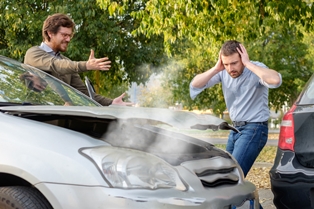
Many people assume that the driver in the back is always at fault in causing a rear-end collision. However, this is not always the case, and you must be ready to prove that the other driver was negligent if you were injured in a rear-end collision. Establishing who caused the crash can be even more complicated if the driver in the rear pushed the vehicle he hit into another vehicle—setting off a multi-vehicle crash.
How Do You Prove the Other Driver’s Liability in a Rear-End Collision?
Negligent drivers cause rear-end accidents for many reasons. Speeding, tailgating, and distracted driving are a few of the reasons they cause these preventable wrecks. Here’s how you can prove the other driver’s fault if liability is disputed:
- Rules of the road. A basic rule of the road requires drivers to maintain a safe distance from the vehicle in front of them so that they have sufficient time to stop if the lead driver has to suddenly slow down or stop. Often it is assumed that the driver in the rear failed to follow this rule, with the accident being the result. Some insurance adjusters for negligent drivers will assume that their insured violated this rule and not even argue fault, instead focusing on disputing your injuries.
- Speed. When liability is in dispute, establishing the speed that the vehicles were traveling at the time of the crash can help show that the negligent driver was driving too fast and too close to your vehicle.
- Damage to the vehicles. The damage to the vehicles and their position at the time of the collision can help establish how the accident occurred. If your vehicle suffered damage to its rear and the negligent driver’s damage was to the front end, this clearly shows that a rear-end collision occurred, though does not completely prove the other driver’s fault.
- Witness statements. If witnesses—especially neutral third-parties who do not know the other driver or you—saw the crash happen, their statements can help establish how the negligent driver’s actions caused the rear-end collision.
- Pictures and video. Pictures of the damage to the vehicles, positions upon impact, and general road and weather conditions can be powerful evidence when establishing fault after a wreck.
- Police report. The police officer investigating your accident will hopefully make a determination as to the cause of the crash and issue a citation to the other driver who caused your accident. The police report and officer’s opinion can be useful in convincing the other driver’s insurance adjuster that his insured—and not you—was the liable party.
- Accident reconstruction expert. If liability is hotly disputed or the accident turned into a multi-vehicle wreck, you may need to hire an accident reconstruction expert who can use evidence, such as the police report, pictures, damage to the vehicles, and witness statements to reenact the crash and determine who caused it.
Is the Driver in the Rear Always at Fault?
While the driver in the rear is often found to be at fault, in some cases it is the lead driver who causes the wreck. The driver in front could be partially or completely liable in these circumstances:
- He suddenly slams on his brakes for no reasonable reason.
- He is driving erratically, and this causes another driver to rear-end him.
- He unexpectedly reverses, such as if he pulled out too far into an intersection.
- He suddenly cuts in front of a driver, and there is insufficient time for the driver in the back to stop.
- He is merging into traffic, but fails to maintain a sufficient speed after pulling immediately in front of another vehicle.
- His brake lights do not work properly.
- He gets a flat tire, but fails to pull over to the side of the road.
You need an experienced accident attorney to help you prove fault and hold the other driver accountable if you were injured in a rear-end collision. Review our testimonials and then fill out our online form to schedule your free, no-obligation consultation.
Related Links:


